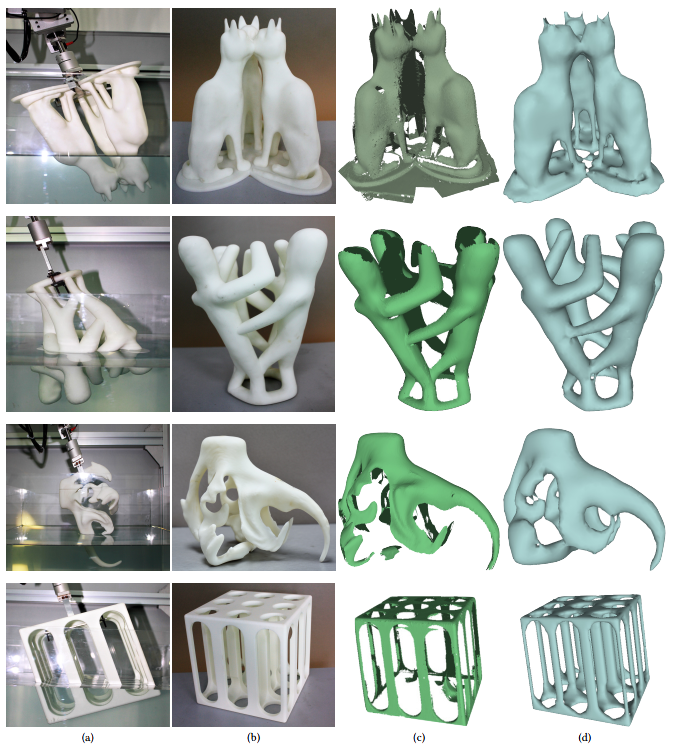New research has identified a novel way of 3D scanning objects by submerging them in water.
The researchers based their method on Archimedes’ ancient principle of displacement. By measuring changes in water volume, the team can reconstruct the shape of 3D objects.
In contrast to laser 3D scanning, the water dipping method is able to discover hidden areas and is able to operate with materials difficult to scan.
The research team consists of authors from across the globe, from Tel-Aviv University, Shandong University, University of British Columbia and Ben-Gurion University.
The team will present their work at SIGGRAPH 2017, the annual computer graphics conference. Joining them will be the Austrian team that created novel 3D printing software for functional objects.
Gif shows the dipping process and the adjacent measurements taken.
Dip scanning
Using a robotic arm, the research team dipped complex 3D shapes into a small pool of water.
By measuring the volume of the water gradually as the object becomes more submerged, the team are able to accurately reconstruct the shape of the object.
Gif shows how the measurements are taken in slices of the object.
More dips the merrier
The researchers explain to get the best 3D reconstruction of the object, the object needs to be dipped many times.
Objects are submerged from varying angles to get a full coverage of the shapes.
Gif shows the increase in definition with number of dips.
Dipping over scanning
In comparison to conventional optical scanners, the water dipping technique has several advantages. Firstly, and most notably, the water is able to penetrate all areas of the objects including hidden areas.
The process is also not discriminatory of certain materials unlike optical scanners. Conventional scanning equipment finds difficulty in scanning shiny or reflective surfaces.
Lastly, the method is relatively low-cost in comparison to the use of expensive 3D scanning equipment.

Future work
Despite these advantages, the researchers do note that the water dipping process can be time consuming with the requirement to perform multiple dips.
Addressing this, the researchers will focus future work on optimizing the water dipping process by primarily addressing the speed and reducing the number of required dips.
The paper, titled ‘Dip Transform for 3D Shape Reconstruction’, is available here.
If you want to work in the 3D printing industry, check out our 3D Printing Industry Jobs. And to stay up to date with the all the upcoming events within the 3D printing industry, or to add your own, visit our new events page.
For all the latest 3D printing news, subscribe to the most widely read newsletter in the 3D printing industry, follow us on twitter and like us on Facebook.
Featured image shows the water dipping 3D scanning method. Image via ACM SIGGRAPH 2017.



